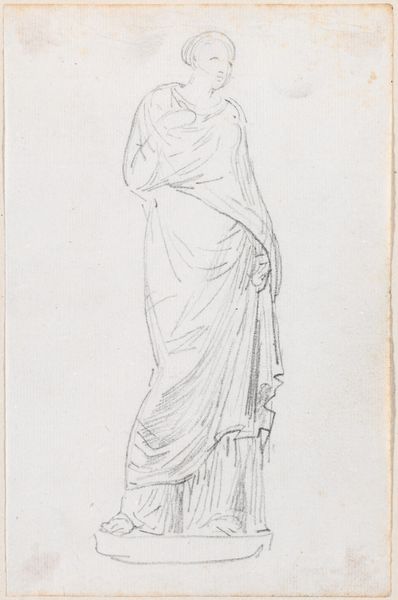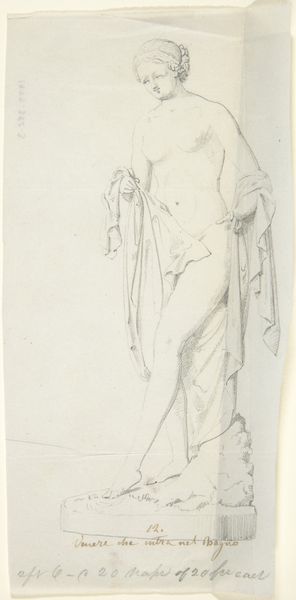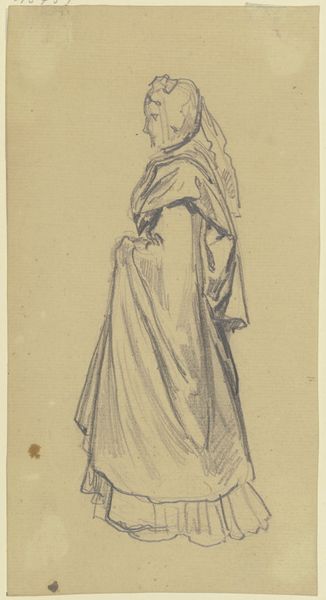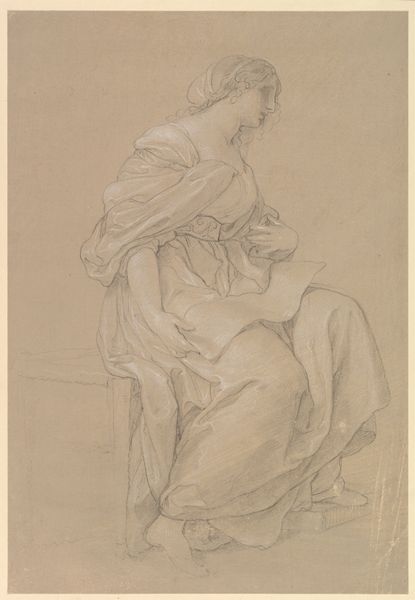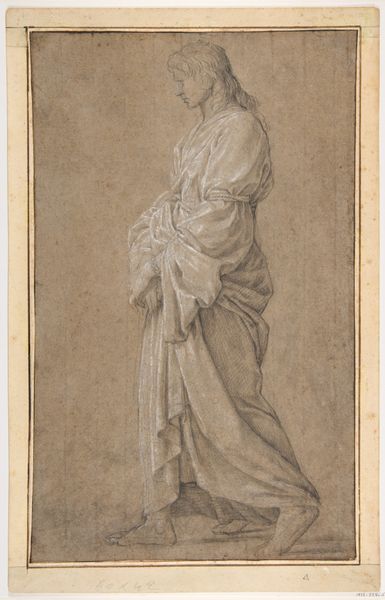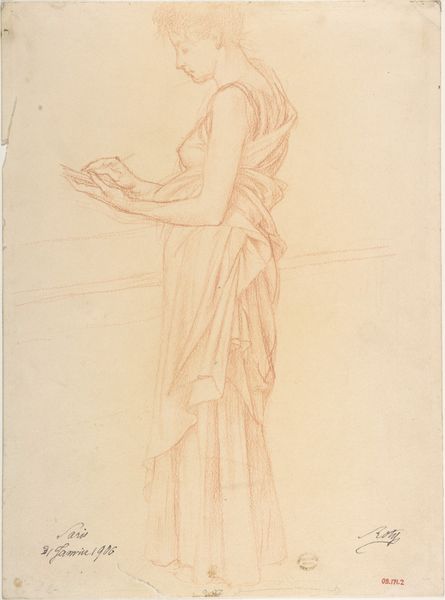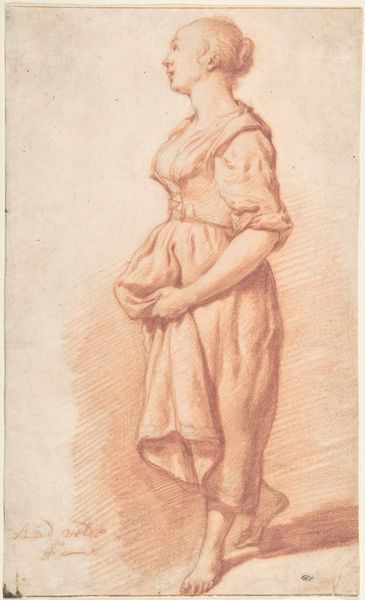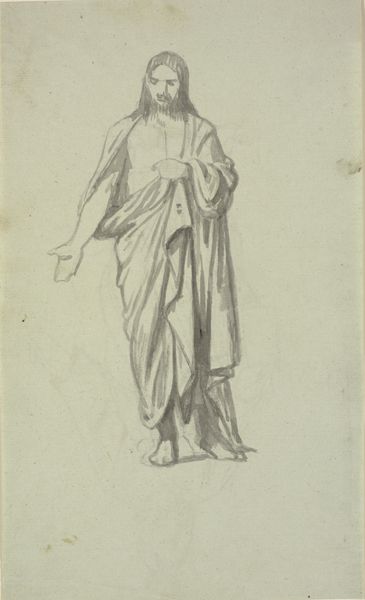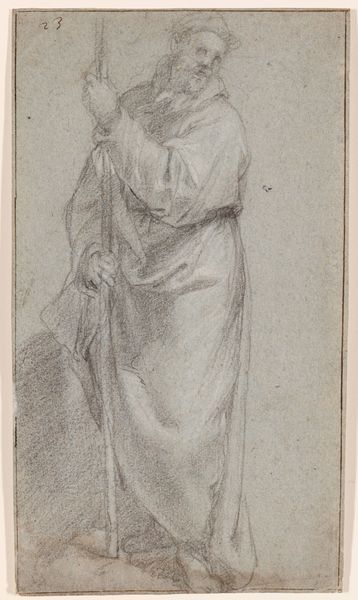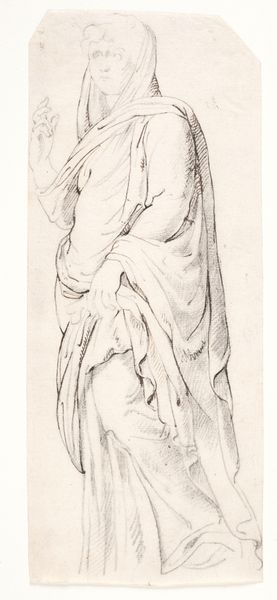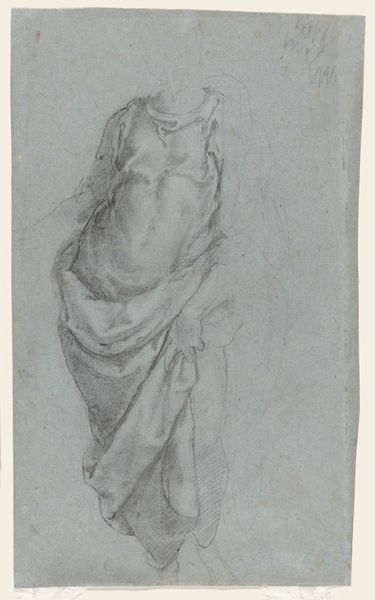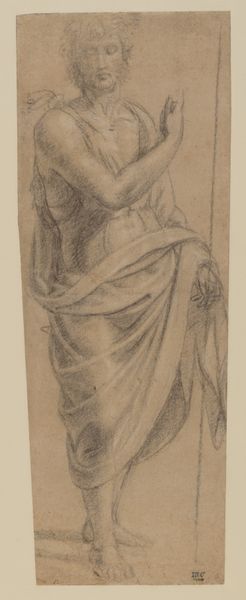
drawing, pencil
#
portrait
#
drawing
#
pencil sketch
#
figuration
#
classicism
#
pencil
#
history-painting
#
academic-art
Dimensions: 230 mm (height) x 145 mm (width) (bladmaal)
Editor: Here we have “Standing Figure in Classical Dress,” a pencil drawing by C.A. Lorentzen, created sometime between 1746 and 1828. There's a quiet vulnerability to the figure. It's a simple sketch, really, but something about the way the clothing drapes suggests movement even in stillness. What do you make of it? Curator: Well, immediately I'm drawn to the Neoclassical style. Look at how Lorentzen is engaging with this renewed interest in antiquity during the late 18th century. These artists, they weren't just looking back at Greece and Rome for aesthetic inspiration. The adoption of classical garb and ideals was very much a political statement during this period. How do you see the figure engaging with a contemporary audience? Editor: Hmmm, interesting! I guess, viewing this from a 21st-century perspective, this reference isn't necessarily clear. The style almost becomes abstracted, it loses its direct relationship to a very specific revolutionary intention. Curator: Precisely, it has now become integrated into art history as 'classical'. Consider then, the function of museums, like this one, and collections to influence taste by elevating particular representations of the human form through history. What's shown, and more crucially, *how* it's shown tells its own story. Where do you think this drawing fits into a grander scale? Editor: I see, so museums themselves almost become curators of cultural identity. The history they teach *is* the story, not just a record of it. That’s a very sobering, yet also fascinating, interpretation! Curator: And an ongoing one, always open to questioning! Thanks to your reading, I, too, am re-evaluating art as a fluid and changing visual manifestation of a historical concept.
Comments
No comments
Be the first to comment and join the conversation on the ultimate creative platform.
